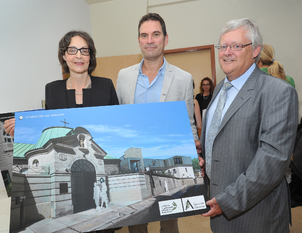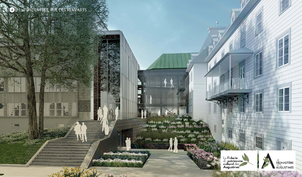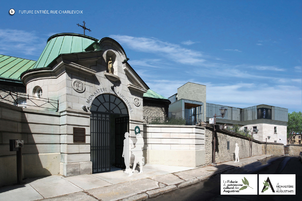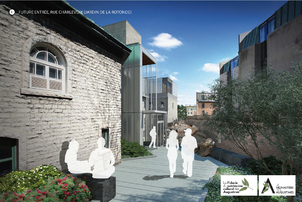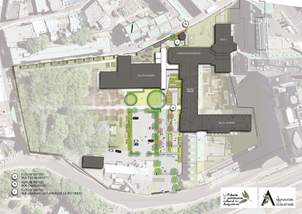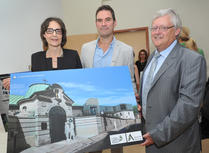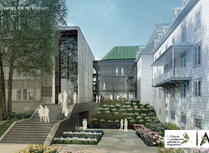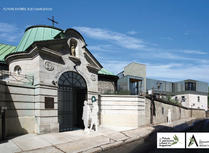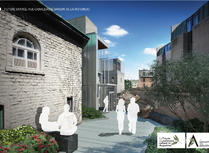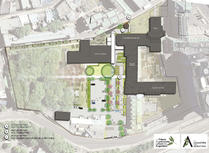THE ARCHITECTURAL CONCEPT BEHIND LE MONASTÈRE DES AUGUSTINES
At a press conference held on August 19 at the Hôtel-Dieu de Québec monastery, the Fiducie unveiled the architectural concept behind Le Monastère des Augustines. In addition to preserving and highlighting the heritage buildings, the architectural concept includes redesigned landscaping and two new constructions: an entrance hall and a museum reserve.
Contemporary architecture
The new glassed-in hall creates a physical link between the two public entrances to the monastery (on rue des Remparts and rue Charlevoix). In addition to allowing for greater accessibility to the monastery, the contrasting design will highlight the fact that this historic former cloister is open to the public for new purposes. The open and transparent linear form will act as a contemporary urban sign of the monastery’s new life.
A museum reserve is currently being erected over the St-Augustin wing where the sisters reside. The new construction will make it possible to bring together in one location the collections and archives of the 12 monastery-hospitals founded by the Augustinian Sisters.
Heritage spaces redesigned
In the two older wings of the monastery, plans for the spaces that will form part of Le Monastère des Augustines include converting the Augustinian Sisters’ former cells into 64 rooms of two different types. On the fourth floor, under the rafters, rooms will have more of a simple, contemporary style, whereas, on the third floor, the original partitions and woodwork will be preserved in order to give the rooms a more authentic feel.
More than a dozen rooms on the second floor will be renovated to create space for programming that will promote culture and the concept of total health: activities, seminars, conferences, training etc. On the first floor, space for museum exhibits and archives round out the work to be completed in these wings.
The vaults dating back to 1695 and a number of older vestiges will also be reinforced and restored and, for the first time in history, will be accessible to the public.


